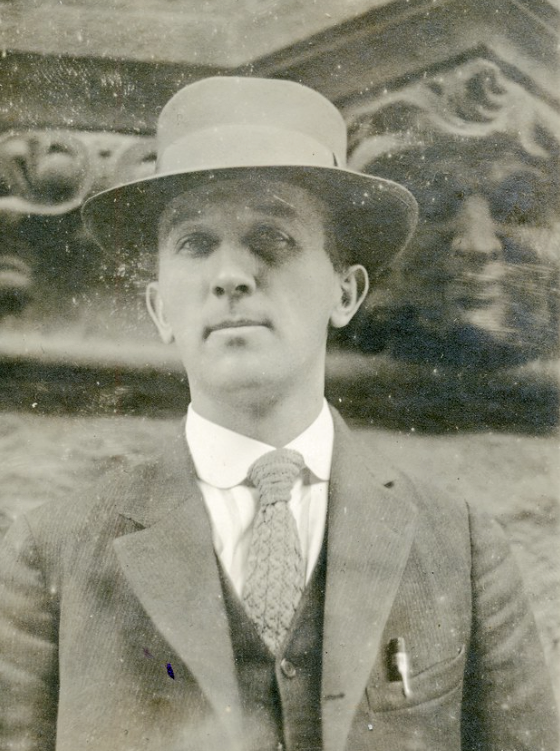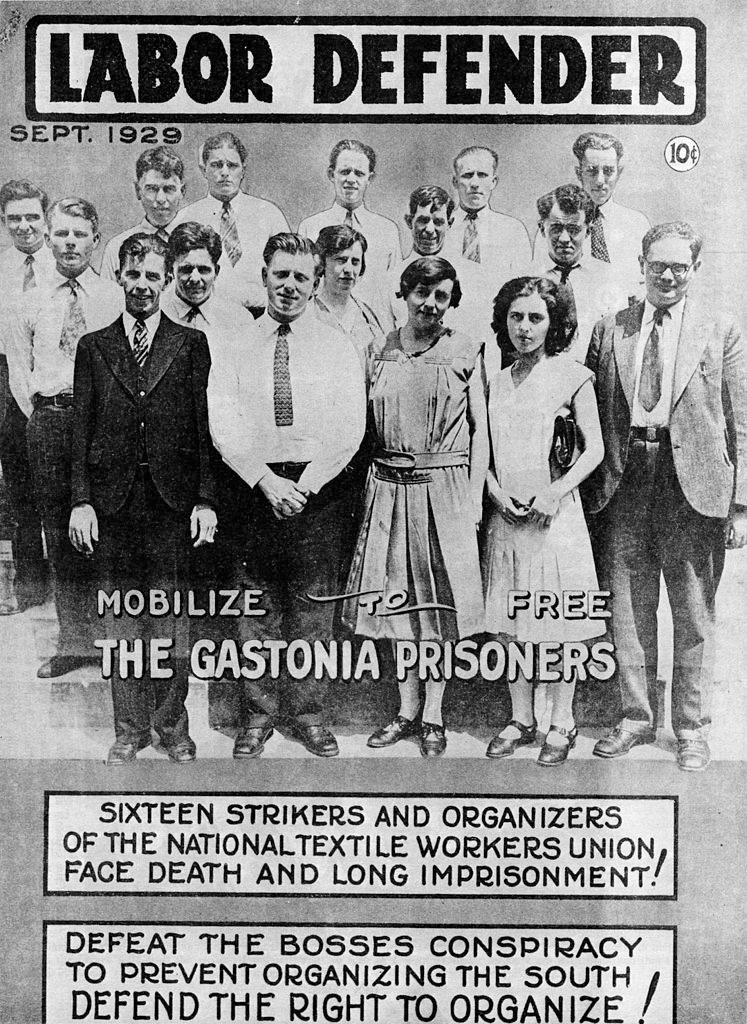Nearly thirty years after his death, the eleventh volume of Philip S. Foner’s epic History of the Labor Movement in the United States: The Great Depression 1929-32 was published this past spring by International Publishers, the historic publishing house of the Communist Party USA. Foner died in 1994, yet the manuscript that makes up the final volume was left almost entirely intact by him and needed some, but not much, work to ready it for publication, as historian Roger Keeran recounts in his introduction.
With the renewed interest by a younger generation in the Communist Party’s (CP) work in the trade unions, Foner’s final volume is likely to reach a wider audience than it would have if it had been released only a few years ago. It was a lifetime’s work to write a history of the U.S working class, and though it ends in 1932, it begins in the British colonial era. Like many people on the U.S. Left, his series educated me on the history of working class radicalism in the U.S. when I was younger.
Few mainstream publications have reviewed Foner’s final volume. A few sympathetic left-wing outlets, however, have been characteristically enthusiastic. Not surprisingly, the CP’s People’s World called it, “A fine and exhilarating read!” Chris Townsend, who played an important role in bringing the final volume to publication, paired a review of the Joe Burn’s latest book Class Struggle Unionism with Foner’s in Counterpunch, where he enthused:
Transforming the current unions from what they are into radically different and aggressive vehicles for working class progress is our mission. I say it. I proclaim it. Spread the word and buy and read these books.
Townsend, the retired International Union Organizing Director of the Amalgamated Transit Union (ATU) and International Representative and Political Action Director for the United Electrical Workers Union (UE), also advocated aggressively a few years ago for another CP-friendly book, Labor’s Untold Story, published by the UE, the one surviving legacy union allied with the Communist Party in the 1930s and 1940s.
One of the big reasons, I believe, that Foner’s final volume has been largely ignored by reviewers, so far, has been the enduring legacy of anti-communism in U.S. intellectual life. The Foner family was victimized by anti-communism for decades. Scott McLemee, surveying the Foner’s controversial legacy (“Seeing Red”) nearly twenty years ago in the Chronicle of Higher Education, observed:
The author or editor of more than a hundred volumes, Foner published studies on a broad range of topics involving the American labor movement, as well as pioneering work on African-American history. His interpretations were unmistakably Marxist, which made his life difficult, even before Sen. Joseph R. McCarthy came along.
Philip and his brother Jack were fired along with sixty faculty and staff members from the City College of New York in 1941 during the short-lived Red Scare preceding the U.S. entry into the Second World War. Foner was pushed to the margins of academic life, but his herculean efforts—especially to document the importance of radicals at each phase in the development of the U.S. labor movement—did bear fruit.
The next generation of New Left historians radicalized by the social movements of the 1960s and 1970s were certainly influenced by Foner’s scholarship even if they went in a very different political direction. Foner remained loyal to the CP right up to the collapse of the USSR in 1991. He even began to garner more mainstream recognition of his work. Shortly before he passed away, according to the New York Times, “the New York Labor History Association honored him with an award for lifetime achievement in labor history.”
However, another reason for the lack of reviews could be that Foner’s historical scholarship has been controversial through the years for many people, including many on the Left predisposed to be supportive of him. Charges of plagiarism and dishonesty dogged his work from the early 1970s onward. Some of the charges against Foner seemed unfair, while others appear unavoidably true. McLemee delved deep into this controversy two decades ago, and his essay is still well worth reading today. You can judge for yourself.
Most people on the Left were content to cut Foner some slack, however. The posthumous publication of the final volume of his History of the Labor Movement in the United States (henceforth HLMUS) could ignite old controversies about his scholarship, especially from right-wing historians, who have always been hostile to him, and maybe even others who felt their legitimate grievances against him were not taken seriously. We’ll see.
Yet, the major failing of his historical work was his Stalinism, which led to some great dishonesty in his work. That part of Foner’s legacy has never been adequately dealt with. There was and still is a tendency to see HLMUS as a resource book, something you could take a quick look at to find out what was happening at a certain moment in working class history and get a Left perspective on it. However, this apolitical reading of Foner is profoundly wrong.
His histories of the U.S. labor movement were written from the perspective of the orthodox, pro-Moscow Communist movement from the late 1920s onward. What did this mean in the writing of U.S. working class history? It meant that as Foner’s HLMUS edged closer to the impact of the Russian Revolution on the U.S. working class, it became more unreliable and dishonest.
Foner (and a generation of Marxist scholars) saw continuity between the Bolshevik party under Lenin, which led the most democratic revolution in human history in 1917, and what came later, namely—a totalitarian police state under Stalin. Wild gyrations in Russian foreign policy whiplashed the Communist movement during the Stalinist era starting in the late 1920s with the ultra-sectarianism of the “Third Period” that runs through the last two volumes of Foner’s HLMUS series.
Mirroring the repression (and then the erasing of) critics, Foner follows the lead of the increasingly Stalinized Communist Party of the USSR when he writes out of history important leaders of the Communist movement, especially James P. Cannon and Max Shachtman, who later came to support exiled Russian revolutionary leader Leon Trotsky. He omits consideration of them even though Cannon was the National Chairman of the Workers Party, the legal, above-ground expression of the Communist Party, and the head of the International Labor Defense (ILD) , its legal defense arm.
Cannon exhausted himself trying to save the lives of Sacco and Vanzetti. Max Shachtman, who edited the Labor Defender, the ILD’s magazine, was also purged from history by Foner, even though he also wrote the ILD’s major pamphlet on the defense of Sacco and Vanzetti. This is not about arguing about who your favorite Marxist was in the U.S. and whether they were badly treated or not, but rather teaching an honest account of the Communist movement, something you are not going to get from Foner.
Foner’s acts of historical censorship were compounded by political amnesia concerning the Third Period policies of the Communist International, which were so disastrous that they were a major contributing factor to the triumph of the Nazis in Germany. The American Federation of Labor (AFL) union leaders and the Socialist Party led by Norman Thomas were denounced as “fascists” during this time. As late as 1933, CP leader Earl Browder argued that the Roosevelt administration was heading in a “fascist direction.” If any serious party on the U.S. Left argued such a thing today, they would be treated as pariahs, if not as lunatics.

Building “revolutionary unions” became the hallmark of this period, something CP trade union leader William Z. Foster had previously argued against. The Trade Union Educational League (TUEL) was led by Foster, and its goal was to build a broad left-wing, rank and file movement in the AFL. It was one of the best things the CP did in the 1920s. In 1929 in Cleveland, the TUEL was converted into the Trade Union Unity League (TUUL), a new federation of “revolutionary” trade unions, which would supposedly organize millions of unorganized workers, eclipsing the AFL.
The bulk of Foner’s final volume is devoted to the work of the TUUL. Chris Townsend in his book review pitches the TUUL as relevant for today’s struggles:
Foner’s work documents in his customary detail the political and organizational roots of what became the great class struggle upsurge that ultimately gave birth to the Congress of Industrial Organizations (CIO).
Is this claim as to the influence of the TUUL true?
Some called bullshit on the claims of the founding conference of the TUUL at the time. Max Shachtman in The Militant wrote:
It is first necessary to estimate the real strength of the movement represented in Cleveland. For this, one must first strip all the reports of their exaggeration, bombast, circus-tooting arid playing-for-the-record. We then find that the promised mass support for this new “revolutionary” federation of labor that is to challenge the A.F. of L. all along the line failed to materialize.
In one part of the report, T.U.E.L. groups get 126 delegates, and in another, they are given 33 more. Fraternal delegates, i.e., Party and Left wing auxiliaries, ran to 44, and the National Committee had another 40, representing themselves. Not a very solid mass to tackle the exceedingly “revolutionary” tasks set the conference. Even the first convention of the I.W.W. had more than twice that amount represented.
Foster also argued at the founding conference that there would be a political litmus test for those joining the new revolutionary federation. “Our organization,” declared Foster at the founding conference, “must be ready to wage a merciless struggle not only against the employers but against social reformism and right tendencies in the T.U.E.L.” Shachtman wrote, “By this Foster means the exclusive legalization of the line followed by the Communist Party at a given moment, (it changes every month), and persecution of all who differ with it.”

The CP led many desperate strikes in these years from the textile mills of Gastonia, North Carolina, to the fields of California, where they faced terrible violence from the employers and state and local governments, but they could not build stable unions with this “revolutionary” line. Here’s what the expelled supporters of former CP leader Jay Lovestone, who were not sympathetic to Trotskyism at all, had to say about Foster and the Third Period:
The leaders of the official Communist Party of the United States have their feet in America but their heads in Europe. Their speeches deal with problems of Soviet workers and forget the problems of American workers. Foster writes a book Towards Soviet America which might has well been written on Mars for the reflection of American realities that can be found in it. (20-21)
Lovestone supporters were as close to Stalinists as you can be but broke with the Communist International over its policies towards the United States. You could even argue that the extreme sectarianism of the CP during the Third Period held back organizing in the workplace. When successful struggle emerged during 1934, it was in AFL unions that radicals and revolutionaries operated in, not the TUUL affiliates. The one standout exception during the lost years of the Third Period was the heroic work that the CP did to save the Scottsboro Boys.
Foner provides a small hint that there were problems with this period by saying that the CP would soon abandon their “sectarianism” towards the end of his final volume. I’m not arguing against reading Foner, but one should understand the limitations and political framework of his work, especially his History of the Labor Movement in the United States series.

